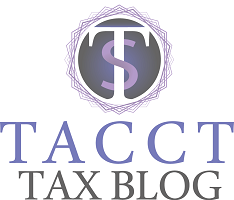
The Internal Revenue Service plans to transition more of its services for taxpayers to online, automated self-service options next tax season to save money and manpower.
The IRS said the changes were made following input from stakeholders in the tax community and reflect the need for increased use of automated self-service options. With limited resources to support person-to-person services on the phone or at Taxpayer Assistance Centers, the IRS is emphasizing services, such as those found on IRS.gov, to help meet a number of taxpayer needs.
The changes for filing season 2014 affect these 6 areas:
- Tax Return Preparation
- Transcript delivery
- Tax Law Assistance
- Tax Refund Inquiries
- Employer Identification Number
- Practitioner Priority Service
Tax Return Preparation
Among the changes will be the elimination of tax prep services at IRS walk-in centers. In recent years, the IRS said it has been preparing fewer tax returns for taxpayers at its walk-in offices. Tax preparation has only been available in a limited format at some IRS offices and not every day of the week at some locations. In addition, taxpayers had to have income below the Earned Income Tax Credit thresholds to receive such assistance.
This coming tax season, the IRS will no longer be handling tax prep at its walk-in offices. With the growth in electronic tax preparation and continued resource limitations, the IRS will be directing qualified taxpayers during the upcoming filing season to more than 13,000 volunteer partner sites across the country rather than limited services at the IRS’s 250 walk-in offices. The IRS will refer taxpayers who visit the walk-in offices for tax preparation to the nearest volunteer site for tax preparation.
“Get Transcript” Service
Early next year, a new online request option called “Get Transcript” on IRS.gov will enable individual taxpayers with an SSN to instantly view and print a copy of their tax transcripts. With Get Transcript, the IRS promises that taxpayers will be able to save both time and effort. When the new service becomes available, tax transcript requests will typically be referred to the online tool.
Taxpayers will be able to use the tool to authenticate, view and print copies of their tax transcripts in a single session. Taxpayers also will still be able to ask for a transcript be mailed to their address of record by using the existing online tool or sending in a Form 4506T. A specific date when Get Transcript will be available will be announced early in 2014.
The tool will be available for five types of transcripts: tax account, tax return, record of account, wage and income, and verification of non-filing.
Tax Law Assistance
The majority of tax law questions the IRS receives each year are about basic tax law issues. This includes questions pertaining to Forms 1040A, 1040 EZ and related items on Form 1040 such as filing status, dependents, exemptions and taxable income. During each filing season (January to mid-April), the IRS will continue to answer these basic tax law questions.
A small percentage of taxpayers seek help with other, more detailed tax law questions that frequently take more time to address. Beginning with the 2014 filing season, the IRS will refer taxpayers with these more complex questions to several other resources available on its Web site, along with IRS tax publications and the software packages taxpayers may already be using. This step reflects the continuing adoption of tax preparation software. More than 90 percent of all taxpayers use tax return preparation software, the IRS pointed out, either on their own or through their tax preparer, and the tax law help is included as part of the software.
Most tax law questions are asked during filing season. To focus IRS resources on the filing season, outside of the January–April time frame the IRS will refer all taxpayers with tax law questions to its online resources.
Tax Refund Inquiries
Typically, the most common question the IRS receives is about when people can expect to see their tax refunds. In recent years, the IRS has issued more than 90 percent of tax refunds in less than 21 days. With the continued growth of the internet and mobile apps, the IRS will now direct all tax refund inquiries during the first 21 days after a taxpayer files electronically to the “Where’s My Refund?” tool available in English and Spanish through the IRS2Go phone app, IRS.gov and the automated telephone service.
The IRS said that its customer service representatives will only be able to research the status of a refund if it’s been 21 days or more since the return was filed electronically or more than six weeks since a paper return was mailed to the IRS or if the Where’s My Refund? tool directs them to contact the IRS.
Employer Identification Number
The IRS’s EIN Online Assistant processes more than 4 million requests per year electronically, compared to just over 588,000 requests for an Employer Identification Number through the IRS’s manual telephone option.
Beginning with the 2014 filing season, the IRS will refer all Employer Identification Number requests to the EIN Online Assistant and refer only those with questions about a previously assigned EIN to a live IRS representative
Practitioner Priority Service
The Practitioner Priority Service provides tax professionals a dedicated channel to resolve taxpayer client account issues. However, over the past few years, a growing number of customers who were not tax professionals used this service.
Beginning in January, the IRS said it will limit PPS to tax professionals and requests related to resolving client related issues. All other requests will be referred to other appropriate resources for service. The change is expected to enable the IRS to provide better service to more tax practitioners and help free up other resources for customer service.
However, the IRS still has not announced plans to re-open two of the most popular online services used by tax practitioners, its Disclosure Authorization and Electronic Account Resolution e-services apps, which closed in Septermber despite protests from several associations representing accountants and tax preparers.
The IRS promised that any savings realized from these initiatives will be reinvested into improving service on the phone and at the agency’s walk-in sites.



